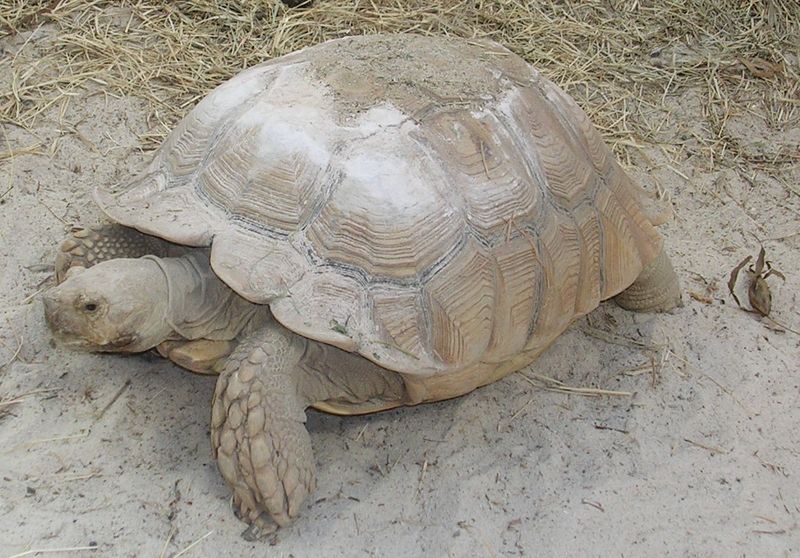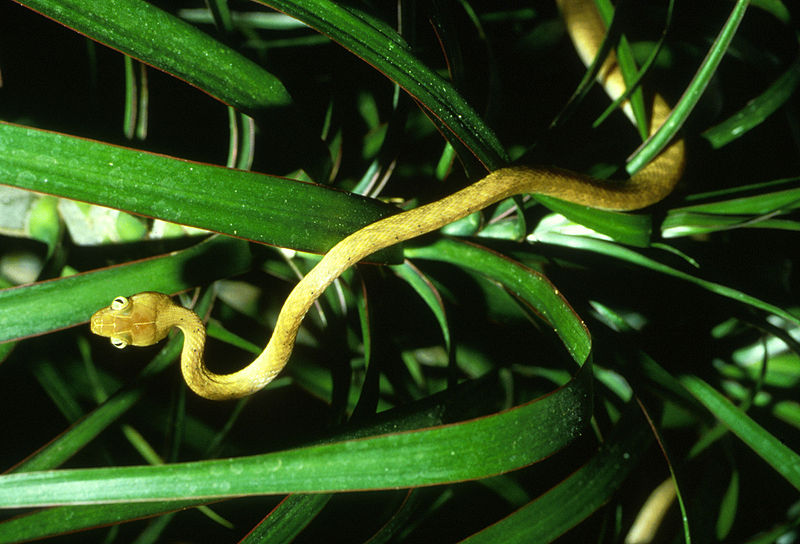 From enormous Burmese Pythons in Florida to Wall Lizards in NYC, introduced species come as little surprise to US herp enthusiasts. But the recent (December, 2010) discovery that a huge African Spurred or “Sulcata” Tortoise, Geochelone sulcata, had apparently been living in an Arizona desert for some time, gave most of us pause for thought.
From enormous Burmese Pythons in Florida to Wall Lizards in NYC, introduced species come as little surprise to US herp enthusiasts. But the recent (December, 2010) discovery that a huge African Spurred or “Sulcata” Tortoise, Geochelone sulcata, had apparently been living in an Arizona desert for some time, gave most of us pause for thought.
Surprises in Deserts and Suburbs
Arizona Fish and Game biologists collected the 100+ pound tortoise in the Queens Valley area of the Sonora Desert. Judging by its burrows (one of which measured in excess of 9 feet) and other evidence, they believed it to have been at large for quite awhile. The tortoise appeared to be in good health.
This is the second African Spurred Tortoise that has been found in an undisturbed habitat in Arizona, but quite a few have been recovered wandering about suburban neighborhoods. Unfortunately, hatchlings are inexpensive, but few hobbyists are equipped to handle the adults…a pair of adults under my care at the Prospect Park Zoo were crowded even in a ½ acre outdoor exhibit (please see article below).
Other Exotics in Arizona
Wildlife officials report that a free-living Leopard Tortoise and an Alligator Snapper have also been found in Arizona, and I have been informed by in-state friends that Common Snapping Turtles, Red-Eared Sliders and American Bullfrogs are established (pleases see article below).
Introduced Herps as a Global Concern
 While introduced reptiles and amphibians are not seen by most folks as being a serious problem, history tells a different story. Red-Eared Sliders, African Clawed Frogs, American Bullfrogs, Marine Toads and others have wrecked havoc in foreign environments worldwide, Brown Tree Snakes has caused the extinction of most of Guam’s Birds…the list goes on.
While introduced reptiles and amphibians are not seen by most folks as being a serious problem, history tells a different story. Red-Eared Sliders, African Clawed Frogs, American Bullfrogs, Marine Toads and others have wrecked havoc in foreign environments worldwide, Brown Tree Snakes has caused the extinction of most of Guam’s Birds…the list goes on.
In addition to well-documented environmental problems, introduced herps are of concern to responsible pet owners as well. Spurred by the discovery of large populations of Burmese Pythons and other exotics in Florida, a spate of new laws are limiting the availability of many species in several states…please exercise care and report any non-native species sighted to your state wildlife agency, or contact me for assistance.
Further Reading
Original news release with photos of the tortoise found in Arizona.
Arizona’s 10 Most Harmful Invasive Species (Az Fish and Game)
For potential tortoise owners: Are You Ready for an African Spurred Tortoise?
Spurred Tortoise image referenced from wikipedia and originally posted by Escaladix
 That Reptile Blog – Reptile, Amphibian and Exotic Pet Care and Information
That Reptile Blog – Reptile, Amphibian and Exotic Pet Care and Information



I love Sucata so much, but Taiwan is forbidden to have one.
Hello Eric, Frank Indiviglio here.
Nice to hear from you again. I didn’t realize it was illegal to import Spurred Tortoises into Taiwan, thanks for the info; they are very interesting, but very few people have the space to keep them properly. In the US, turtle rescue centers, zoos and nature centers are filled to overflowing with abandoned pets. Unfortunately, hatchlings are still inexpensive, so the problem goes on. Stay with your spotted turtles…they are both rare and small!
Please let me know if you need any further information. Good luck, enjoy and please keep me posted.
Best regards, Frank Indiviglio.